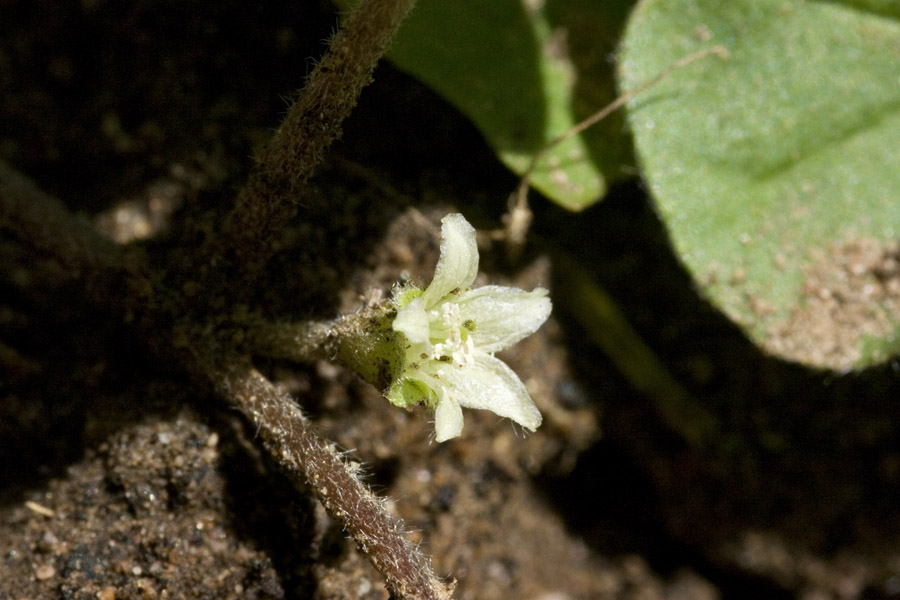Dichondra
|
Family: Convolvulaceae |
PLANTS: Perennial herbs. STEMS: prostrate (stoloniferous or rhizomatous), branched, with dense or sparse appressed hairs; commonly with adventitious roots at nodes. LEAVES: reniform to suborbicular, the base cordate to truncate, on petioles longer than the blade. INFLORESCENCE: of solitary flowers on erect, nodding or recurved peduncles; bracteoles 2, scale-like. FLOWERS: calyx deeply parted into 5 lobes, rotate or campanulate; corollas rotate or broadly campanulate, with a short tube, white or greenish or greenish-yellow, 5-parted; stamens usually exserted, the filaments free, glabrous, the anthers orbicular to broadly ellipsoid; ovary emarginate to deeply 2-10bed, 2-10cular, 4-ovulate, glabrous to densely pubescent; styles 2, appearing gynobasic, usually unequal in length; stigmas capitate. FRUITS: capsular, indehiscent or tardily dehiscent and circumscissile, membranaceous, entire or 2-10bed, the pericarp thin. SEEDS: 2-4, ellipsoid, smooth, glabrous. NOTES: Ca. 15 spp. mostly temperate or subtropical. Many of the taxa have been considered variants of Dichondra repens. (Greek: di = two + chondros = a grain, from fruit). Tharp, B. C. & M. C. Johnston. 1961. Brittonia 13:346-360. Dichondra micrantha Urban is commonly cultivated as a ground cover in lawns and can be distinguished by nodding flowers, calyces less than 2.5 mm long in fruit, and stems 0.2-0.8 mm thick. REFERENCES: Austin, Daniel F. 1998. J. Ariz. - Nev. Acad. Sci. Convolvulaceae 30(2): 61. Sep 5, subequal, oblong or spatulate; cor campanulate, equaling or shorter than the cal, induplicate-valvate in bud, deeply lobed; stamens surpassed by the cor; ovary deeply divided into 2 essentially separate carpels, the 2 styles arising between them at the base; each carpel with 2 ovules; stigmas capitate; fr thin-walled, indehiscent or irregularly dehiscent, subtended by the persistent cal; creeping herbs with reniform to rotund lvs and small, axillary, greenish-white fls solitary on pedicels usually shorter than the lvs. 15+, warm reg. Gleason, Henry A. & Cronquist, Arthur J. 1991. Manual of vascular plants of northeastern United States and adjacent Canada. lxxv + 910 pp. ©The New York Botanical Garden. All rights reserved. Used by permission. |

